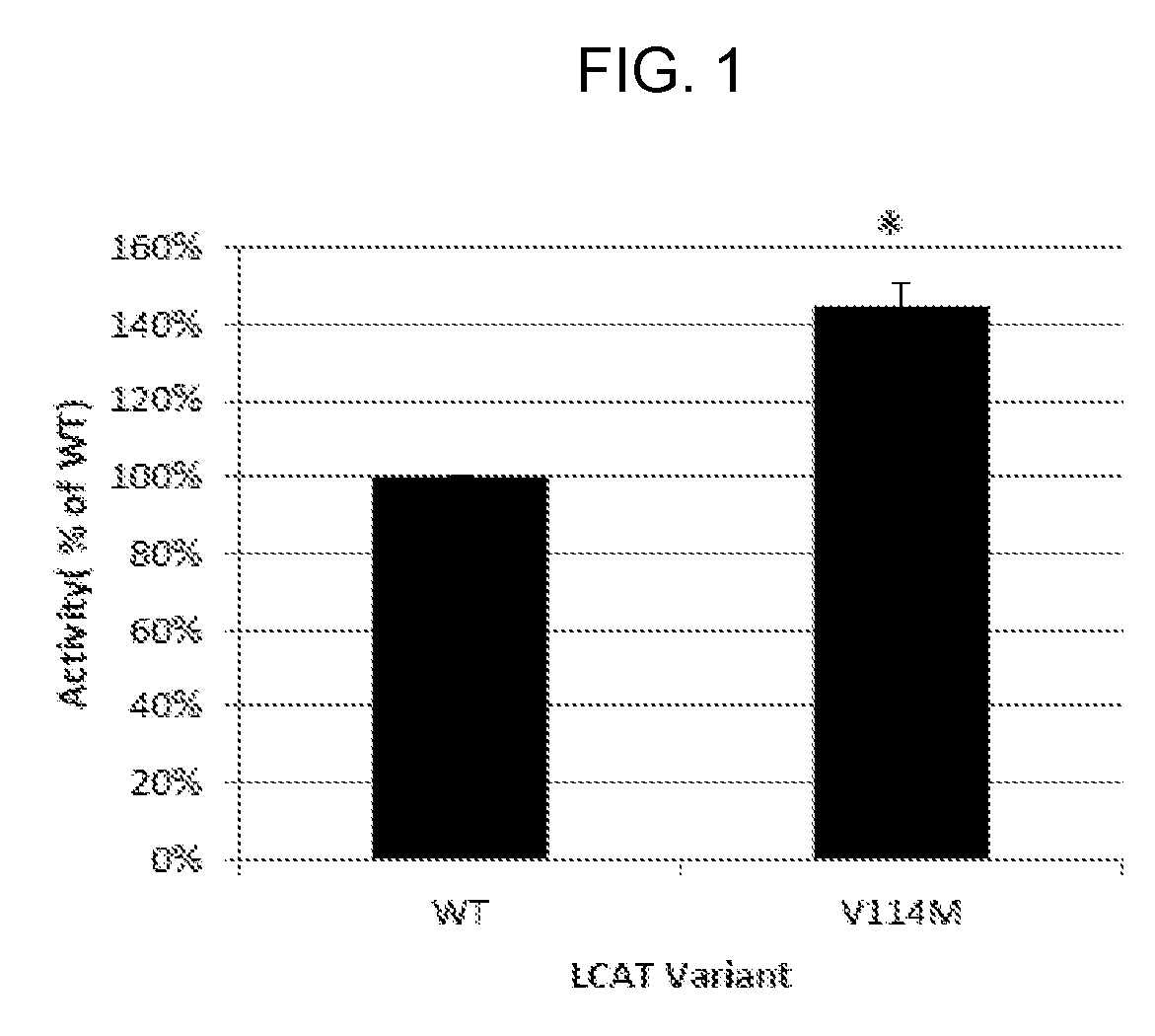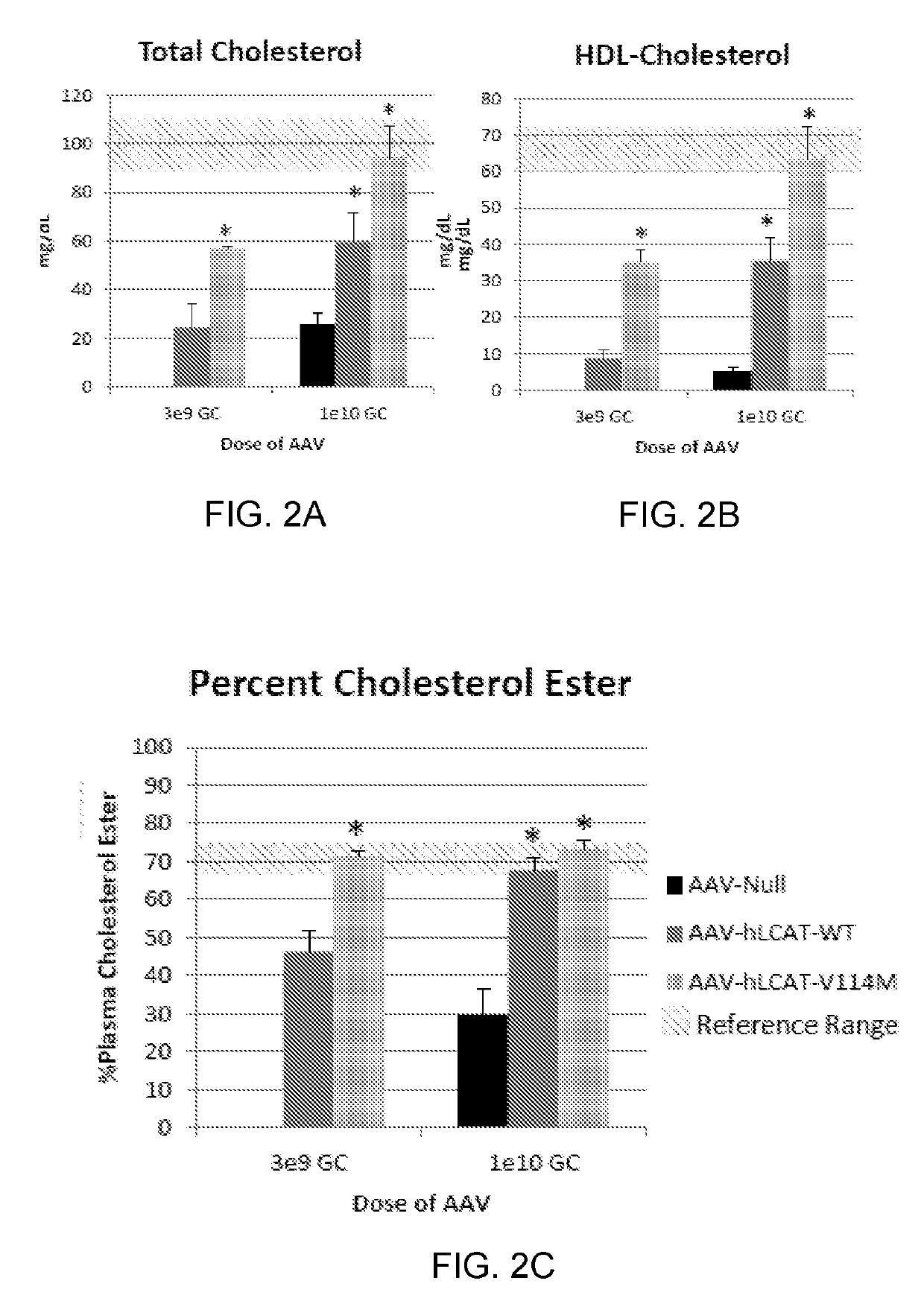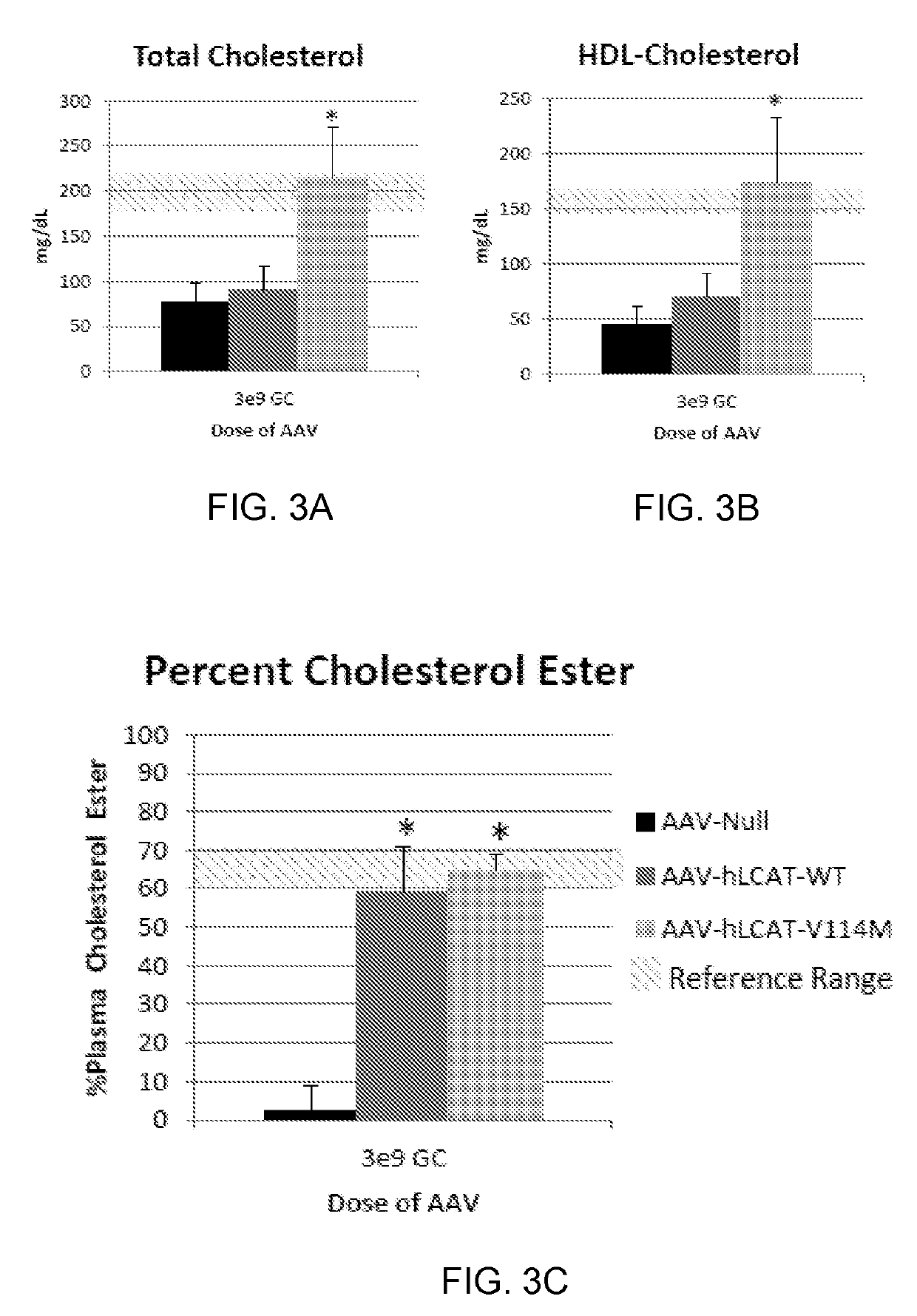Compositions comprising a lecithin cholesterol acyltransferase variant and uses thereof
a technology of acyltransferase and lecithin, which is applied in the direction of transferases, peptide/protein ingredients, drug compositions, etc., can solve the problems of unclear whether statins are beneficial for patients, low hdl cholesterol is associated with an increased risk of chd, and serious cardiovascular pathologies, so as to prevent the need for a kidney transplant, improve renal function, and improve the effect of hdl cholesterol
- Summary
- Abstract
- Description
- Claims
- Application Information
AI Technical Summary
Benefits of technology
Problems solved by technology
Method used
Image
Examples
example 1
n of LCAT Variants
[0133]A series of human LCAT variants containing a single amino acid change at residue position 114, with respect to the numbering of SEQ ID NO:1, which includes the native hLCAT signal peptide (amino acids 1-24). The native amino acid at this position is valine; the variants generated included hLCAT-V114F; hLCAT-V114I; hLCAT-V114L; hLCAT-V114M; hLCAT-V114P; and hLCAT-V114Q. All LCAT variants were created using GeneStrand fragments [purchased from Eurofins Genomics], and cloning into the widely used expression plasmid, pcDNA3.1. GeneStrand fragments and plasmids were cut with the restriction enzymes KpnI and HindIII from New England Biolabs (NEB) and then the cut fragments were ligated into the plasmid backbones using T4 Ligase also from NEB. Expression plasmids containing each of these variants were used to assess activity as described below.
[0134]The hLCAT-V114M variant was cloned into an expression plasmid and its activity was tested in vitro on recombinant HDL ...
example 2
LCAT Activity Assay
[0138]After thawing, HEK293 cells were passaged 2-3 times in standard serum medium (such as DMEM w / FBS). Cells were then adapted to serum free medium (Freestyle 293 Expression Medium from ThermoFisher catalog #12338026) by reducing the volume of serum containing medium each passage. A trypsin inhibitor (Thermo-Fisher #T6522) was added to media immediately after trypsinizing to prevent death of the cells. Once adapted, cells were plated at 3×105 cells per well, in 12-well plates for transient transfection. At approximately 80% confluency, or 24-48 hours later, cells were transfected using Lipofectamine. 4 μg of each plasmid DNA construct was used per well, with each construct repeated in triplicate wells. Media was changed 6 hours later and then collected 48 hours post-transfection. Media samples were aliquoted and frozen at −80° C. immediately after collection.
[0139]Recombinant HDL (rHDL) was prepared via cholate dialysis using POPC (Avanti Lipids #850457), ApoAI ...
example 3
cal Development of AAV Based Gene Therapy for FLD—AAV.hLCAT in LCAT KO and LCAT KO / hApoA-I Transgenic Mice
[0141]The minimally efficacious dose (MED) of the WT human LCAT AAV vector was identified in LCAT KO and humanized LCAT KO / hApoA-I transgenic mice.
A. Dose Response of AAV8-TBG-hLCAT in LCAT KO Mice
[0142]The MED of AAV8-TBG-hLCAT was determined in LCAT KO mice. The MED is defined as the lowest dose that produces a significant increase in plasma percent cholesterol esterified (% CE). We estimated the starting dose for our studies based on the doses used in human trials for other diseases. For reference, the therapeutic dose of Glybera (Bryant, L. M. et al. Lessons learned from the clinical development and market authorization of Glybera. Hum Gene Ther Clin Dev 24, 55-64 (2013)). the only gene therapy product approved in western medicine, and also an AAV based therapy, is 1e12 GC per kg of bodyweight, which is approximately equivalent to 3e10 GC per mouse. In the hemophilia trials,...
PUM
| Property | Measurement | Unit |
|---|---|---|
| concentration | aaaaa | aaaaa |
| mass | aaaaa | aaaaa |
| mass | aaaaa | aaaaa |
Abstract
Description
Claims
Application Information
 Login to View More
Login to View More - R&D
- Intellectual Property
- Life Sciences
- Materials
- Tech Scout
- Unparalleled Data Quality
- Higher Quality Content
- 60% Fewer Hallucinations
Browse by: Latest US Patents, China's latest patents, Technical Efficacy Thesaurus, Application Domain, Technology Topic, Popular Technical Reports.
© 2025 PatSnap. All rights reserved.Legal|Privacy policy|Modern Slavery Act Transparency Statement|Sitemap|About US| Contact US: help@patsnap.com



